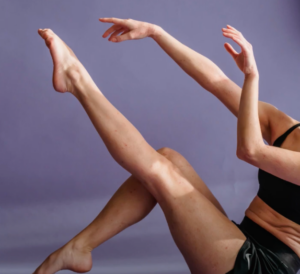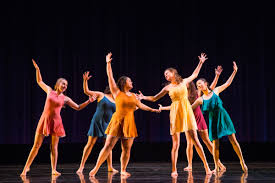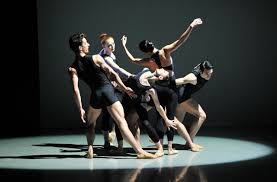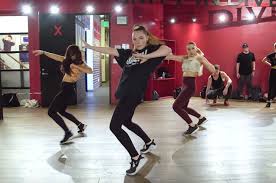 Dance, whether it’s ballet, hip-hop, tap, or any other form, is an art that requires strength, flexibility, and endurance. However, the physical demands of dancing often place significant stress on the body, making dancers vulnerable to injuries such as sprains, strains, and bruises. The intense, repetitive movements, coupled with the high-impact nature of some styles, put pressure on muscles, joints, tendons, and ligaments, often leading to inflammation and swelling. This is where ice packs, specifically cooler gel packs, can play an essential role in aiding recovery and reducing the severity of injuries.
Dance, whether it’s ballet, hip-hop, tap, or any other form, is an art that requires strength, flexibility, and endurance. However, the physical demands of dancing often place significant stress on the body, making dancers vulnerable to injuries such as sprains, strains, and bruises. The intense, repetitive movements, coupled with the high-impact nature of some styles, put pressure on muscles, joints, tendons, and ligaments, often leading to inflammation and swelling. This is where ice packs, specifically cooler gel packs, can play an essential role in aiding recovery and reducing the severity of injuries.
How To Ice Down Injuries
 Gel ice packs are a popular and effective tool for managing injuries and minimizing discomfort after a strenuous dance session or performance. When a dancer sustains an injury—whether it’s a twisted ankle, a pulled hamstring, or a sore knee—immediately applying ice to the affected area can help reduce swelling, numb pain, and prevent further tissue damage. This is especially important for dancers, as managing these injuries promptly allows them to return to their training or performances more quickly. The cold from the ice constricts blood vessels, which helps to reduce blood flow to the injured area, thereby minimizing swelling and inflammation. This process, known as vasoconstriction, also helps numb the area, which alleviates pain temporarily.
Gel ice packs are a popular and effective tool for managing injuries and minimizing discomfort after a strenuous dance session or performance. When a dancer sustains an injury—whether it’s a twisted ankle, a pulled hamstring, or a sore knee—immediately applying ice to the affected area can help reduce swelling, numb pain, and prevent further tissue damage. This is especially important for dancers, as managing these injuries promptly allows them to return to their training or performances more quickly. The cold from the ice constricts blood vessels, which helps to reduce blood flow to the injured area, thereby minimizing swelling and inflammation. This process, known as vasoconstriction, also helps numb the area, which alleviates pain temporarily.
Using gel packs offers several advantages over traditional ice. They are portable, flexible, and easy to apply to specific areas of the body, making them a great option for dancers on the go. Unlike ice cubes or frozen peas, gel packs can conform to the shape of the body, providing a more targeted and even distribution of cold therapy. This flexibility makes gel ice packs ideal for common dance injuries such as sprained ankles, knee injuries, or hip strains, which require consistent contact with the ice for effective treatment. Additionally, gel packs can be reused multiple times and are generally less messy than traditional ice methods, making them an efficient and convenient choice.
Gel Packs To The Rescue
 For dancers, using gel ice packs correctly is essential for maximizing their effectiveness. The standard protocol for ice therapy involves the “R.I.C.E.” method—Rest, Ice, Compression, and Elevation. After an injury, the dancer should immediately apply a gel ice pack to the injured area for about 15 to 20 minutes. It is important to avoid applying the ice directly to the skin, as it can cause frostbite. A thin towel or cloth can act as a barrier between the skin and the gel pack to ensure safety and comfort. Repeating this process several times a day during the first 48 hours can significantly reduce swelling and speed up the healing process.
For dancers, using gel ice packs correctly is essential for maximizing their effectiveness. The standard protocol for ice therapy involves the “R.I.C.E.” method—Rest, Ice, Compression, and Elevation. After an injury, the dancer should immediately apply a gel ice pack to the injured area for about 15 to 20 minutes. It is important to avoid applying the ice directly to the skin, as it can cause frostbite. A thin towel or cloth can act as a barrier between the skin and the gel pack to ensure safety and comfort. Repeating this process several times a day during the first 48 hours can significantly reduce swelling and speed up the healing process.
Ice therapy is not only effective for acute injuries but also serves as a preventative measure for dancers who experience muscle soreness after intense practice or performances. Applying gel ice packs to the legs, lower back, or feet after a long rehearsal or performance can help alleviate delayed-onset muscle soreness (DOMS). The cold therapy reduces the build-up of lactic acid and relieves tightness in the muscles, promoting faster recovery and reducing the risk of injury in subsequent sessions.
The physical demands of dance can lead to a variety of injuries and discomforts, but gel ice packs provide a simple, effective solution for managing and preventing these issues. By reducing swelling, numbing pain, and promoting faster recovery, gel ice packs become an invaluable tool in any dancer’s injury care routine. Whether it’s a sprained ankle from ballet, a sore knee from tap, or a pulled muscle from hip-hop, gel ice packs offer a practical way to manage injuries and maintain peak performance levels.
 Dance schools, especially in urban or suburban areas, often find themselves located in commercial or industrial zones, depending on the size and layout of the town. These locations are chosen for several practical reasons, such as affordability, accessibility, and ample space for the dance floor, which is a significant requirement for these types of schools. In smaller towns or areas with limited real estate options, dance schools may occupy converted warehouse spaces, industrial buildings, or commercial strip malls, making use of properties that might not attract traditional retail businesses but can accommodate the unique needs of a dance studio.
Dance schools, especially in urban or suburban areas, often find themselves located in commercial or industrial zones, depending on the size and layout of the town. These locations are chosen for several practical reasons, such as affordability, accessibility, and ample space for the dance floor, which is a significant requirement for these types of schools. In smaller towns or areas with limited real estate options, dance schools may occupy converted warehouse spaces, industrial buildings, or commercial strip malls, making use of properties that might not attract traditional retail businesses but can accommodate the unique needs of a dance studio. However, there are some downsides to placing a dance academy in these types of areas. One of the main concerns is the lack of a visible, walkable location, which can limit potential students who prefer the convenience of shopping centers or areas with other amenities. Dance studios located in industrial zones may not attract as many casual passersby or new clients, which could limit growth opportunities in the early stages. These locations may also be less conducive to creating a welcoming, community-oriented atmosphere compared to those in more central, retail-heavy districts. Additionally, while commercial and industrial zones offer space, the ambiance may be more utilitarian, which may not align with the warm, artistic environment that many dance schools wish to project.
However, there are some downsides to placing a dance academy in these types of areas. One of the main concerns is the lack of a visible, walkable location, which can limit potential students who prefer the convenience of shopping centers or areas with other amenities. Dance studios located in industrial zones may not attract as many casual passersby or new clients, which could limit growth opportunities in the early stages. These locations may also be less conducive to creating a welcoming, community-oriented atmosphere compared to those in more central, retail-heavy districts. Additionally, while commercial and industrial zones offer space, the ambiance may be more utilitarian, which may not align with the warm, artistic environment that many dance schools wish to project. In the world of dance, it isn’t enough to just have a lot of great moves. You must also be able to use dance to tell a story about whatever song you are dancing to. You should match the beat, keep the rhythm, and use choreography to tell the story that you need to tell. For this, there are a lot of different styles and a lot of different ways for people to dance.
In the world of dance, it isn’t enough to just have a lot of great moves. You must also be able to use dance to tell a story about whatever song you are dancing to. You should match the beat, keep the rhythm, and use choreography to tell the story that you need to tell. For this, there are a lot of different styles and a lot of different ways for people to dance. Virtually every style of dance can have some form of choreography that goes into it. It is most noticeable in something like ballet, clogging, tap dancing, and more, where there is a group of people dancing together to the same beat, using the same moves, at one time. This is called dancing in unison, but there are other techniques that many dancers may use.
Virtually every style of dance can have some form of choreography that goes into it. It is most noticeable in something like ballet, clogging, tap dancing, and more, where there is a group of people dancing together to the same beat, using the same moves, at one time. This is called dancing in unison, but there are other techniques that many dancers may use. Most dances are created by a choreographer. Their job is to make sure that the dance moves are fun for the dancers and the audience, but must also be able to help everyone move in sync with the music and each other. To do this, they must first listen to the music and plan what steps should be made during specific parts of the song. Their focus is often on the timing of the dance moves and then getting the dancer or dancers to step to the same beat. This is a process that could take weeks or months from start to finish and anyone who loves music and dance can make it look great, even if they are not choreographers. However, a choreographer is able to make possible tweaks to every dance routine to ensure that it is done right. Their job is to help dancers go further than the steps of a song. They make dancers feel the music and become a part of it using only their movements.
Most dances are created by a choreographer. Their job is to make sure that the dance moves are fun for the dancers and the audience, but must also be able to help everyone move in sync with the music and each other. To do this, they must first listen to the music and plan what steps should be made during specific parts of the song. Their focus is often on the timing of the dance moves and then getting the dancer or dancers to step to the same beat. This is a process that could take weeks or months from start to finish and anyone who loves music and dance can make it look great, even if they are not choreographers. However, a choreographer is able to make possible tweaks to every dance routine to ensure that it is done right. Their job is to help dancers go further than the steps of a song. They make dancers feel the music and become a part of it using only their movements.